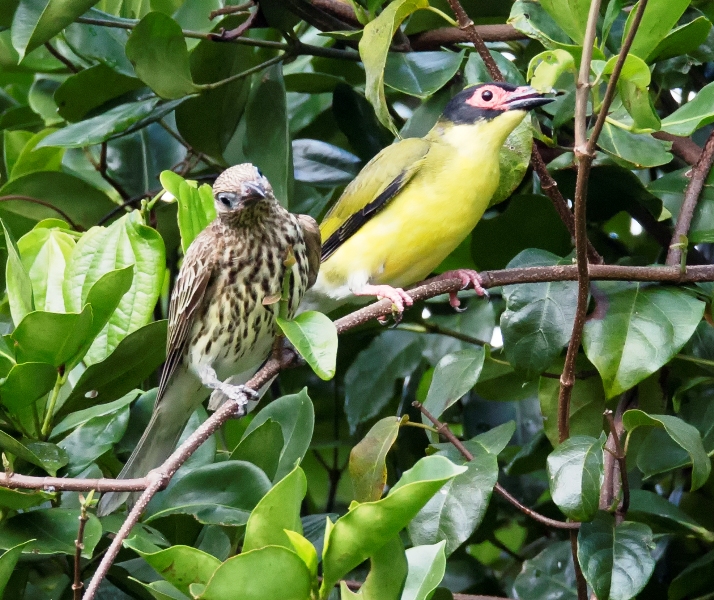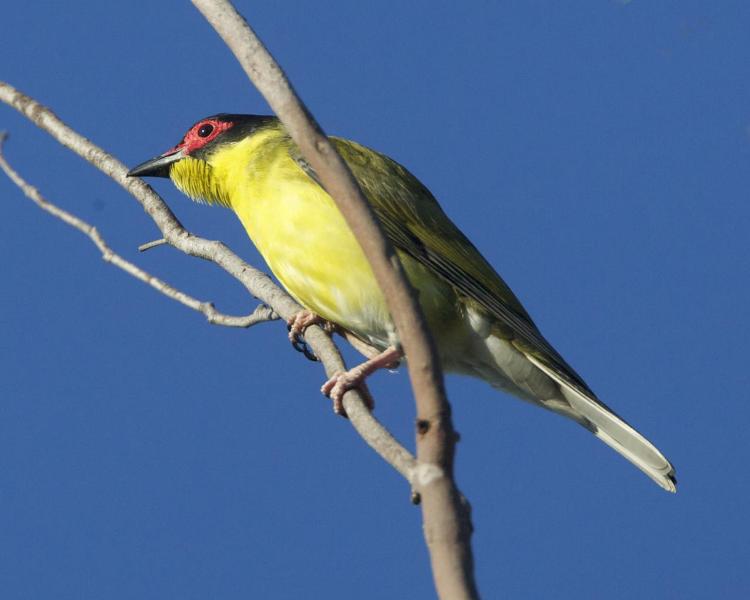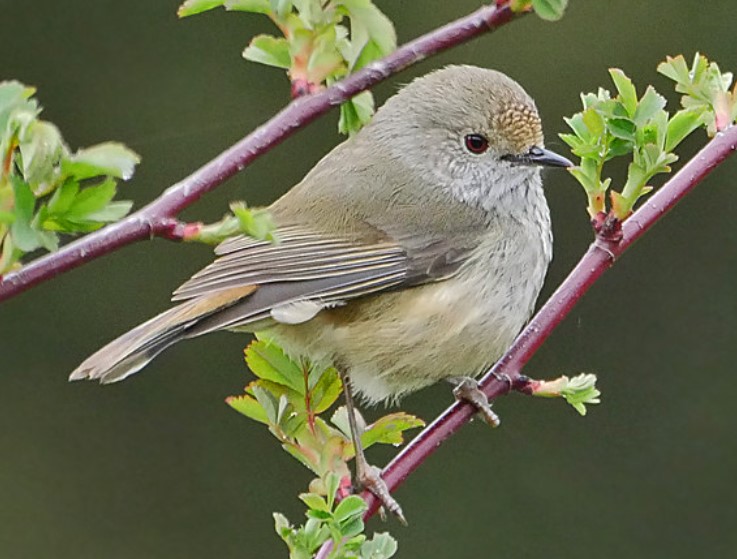The figbird is a large oriole with a warty buff face that reddens when excited, eats only fruit and builds flimsy nests. Despite nesting in small groups, they gather in large flocks of 30-50 or more afterward and live in small groups even while breeding.
They are found on the north and east coasts of Australia, and usually live in galleries of monsoon forests, pockets of rainforest, parks, gardens, and ink weed, lantanas, tobacco bush, bananas, pawpaws, guavas, and mulberries, wherever their food plants are available: figs, native cherries, raspberries, ink weed, lantana, tobacco bush, and bananas, pawpaws, guavas, and mulberries. Locally nomadic, the flocks seldom travel far from their food.

A figbird is arboreal and picks all its fruit from branches in trees and shrubs’ crowns. Birds hang upside down on the ends of twigs to reach the last fruit of a tree, focusing on a single tree until they nearly strip it. Swinging upside down from their perches during rainy weather is also an option. There is a predominance of immature birds in the larger flocks, whereas older birds keep to smaller, more sedentary groups.
In most cases, figbirds breed in pairs, though extra males may brood the nestlings and bring food to them. Feeding and incubation are also shared between both parents. A bill holds momentarily regurgitated fruit before passing it along.
Other names include Southern Figbird, Northern Figbird, Green Figbird, Yellow Figbird, Greybreasted Figbird, Banana-bird, and Mulberry-bird.
Figbirds measure about 285-290 mm in length. Male heads are glossy black, with buff to red skin on the face. The rest of the upper parts are yellow-green; the flight feathers are black with a grey-green edge, and the tail is black with a broad white outline on the outer feathers. Northern races have plain yellow chins and breasts, with green-yellow collars and bellies. The undertails are white. Red-brown eyes and a black bill; fleshy nostrils and fleshy feet. Female figbirds have olive-brown upperparts streaked with darker tones; grey face skin; and white underparts with brown streaks. There is no tail tip on the immature bird; it is a female.

Figbirds whistle emphatically with a down slurred whistle; loud scluks are repeated erratically. Throughout the song, there are mellow tu-tu-haers, tu-heers, tu-heers, and squeakiest notes.
Nesting and breeding take place from October to February.
Figbirds build their nests out of vine tendrils and a few twigs on a horizontal fork near the end of a branch, usually very high up.
There are usually three eggs in the clutch; the eggs are dull green with brown and purple spots; they are oval, 32 x 26 millimeters in size. Both sexes incubate.
These birds can be found around Derby, WA, and the Illawarra district in New South Wales, as well as in Papua New Guinea, Timor, Wetar, and Kai Islands. Australia has two races out of six.
Read More – Gibberbird “Ashbyia lovensis”







